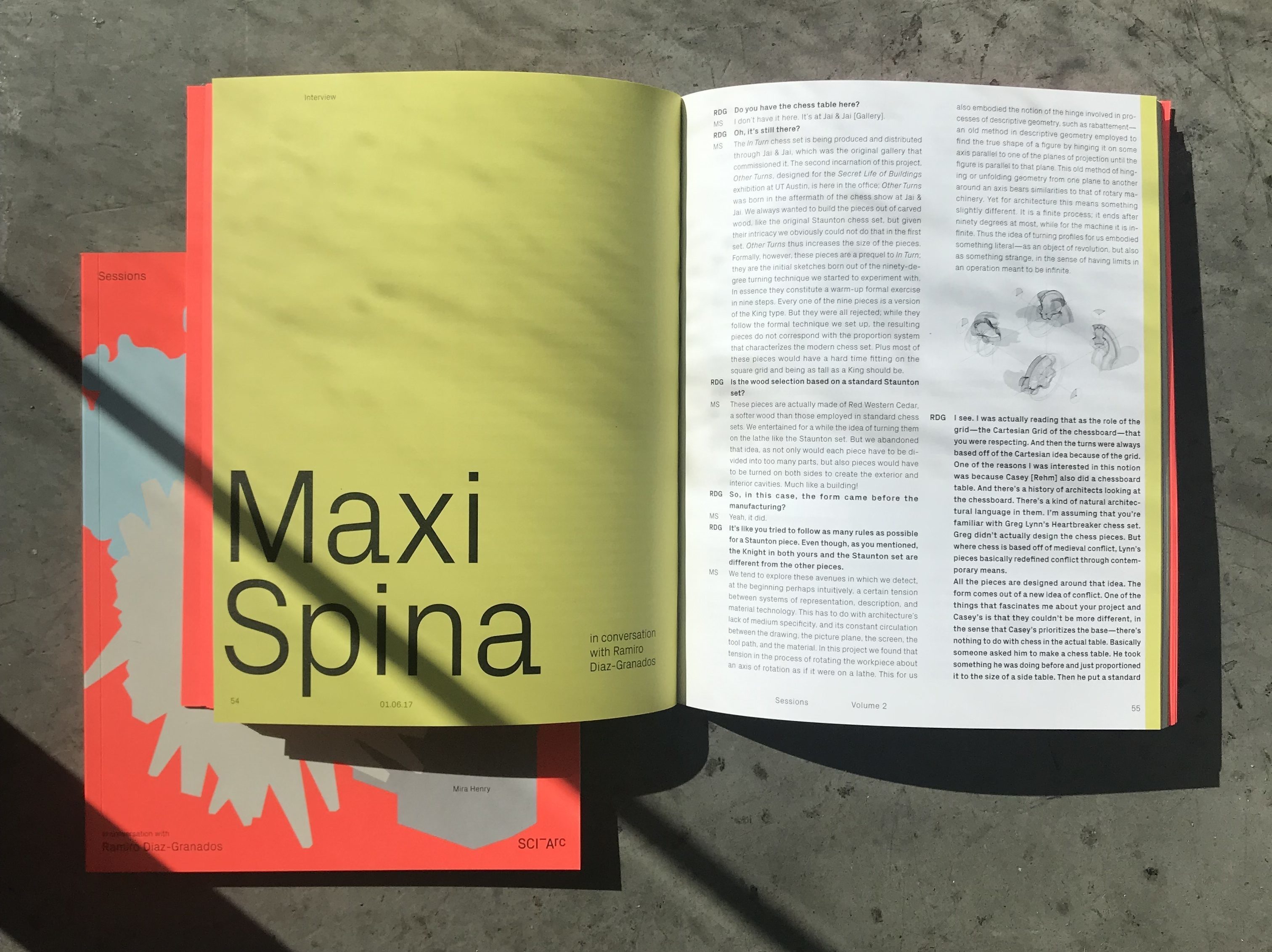Dissecting Sessions, Volume 2 with Ramiro Diaz-Granados
Last month, SCI-Arc celebrated the public release of Sessions, Volume 2, a book comprised of a series of speculative conversations between editor Ramiro Diaz-Granados and a selection of SCI-Arc faculty, including Kristy Balliet, Mira Henry, M. Casey Rehm, and Maxi Spina. It is also the continuation of the first volume of Sessions, published by SCI-Arc Press in 2005.
The premise of Sessions, Volume 2 was to challenge four SCI-Arc faculty to remake one of their own projects with an alternate set of parameters dictated by Diaz-Granados, himself faculty at SCI-Arc. In so doing, the book documents four specific takes on what constitutes contemporary architecture thought and practice. We spoke to Diaz-Granados about the book and what it was like to produce. Sessions, Volume 2 is available for purchase at the SCI-Arc store and online.

SCI-Arc: Hi Ramiro! Thank you for speaking with us! To start: What is Sessions, Volume 2 and how did this project come about?
Ramiro Diaz-Granados: It’s a journal meant to promote emerging SCI-Arc faculty and expose what makes them tick and how they situate themselves in the discipline. Hernán [Díaz Alonso, SCI-Arc Director] approached me and gave me the opportunity to edit and curate it. The first Sessions was released back in 2005 right before social media, as well as other digital media platforms competed with books as a primary vehicle to deliver content.
What was your process in choosing and collaborating with the participants?
The participants were chosen before I came on board. I tried to come up with a conversational framework that felt casual but at the same time structured around a single project from each of them that was used as a vehicle to explore how they dealt with external and internal constraints in order to define a space of creative freedom.

What was important to you about generating the conversations featured in the book?
In addition to this idea of constraints, I wanted to explore the limits of each of their comfort zones by asking them to rethink or remake the selected project with new constraints that they might not be comfortable with. I was less interested in the actual outcome as a product and more interested in tracking how they thought and worked through the problem. It was a way to peek into the actual messiness of any creative endeavor and sort things out in conversation.
Where do you see the contemporary architecture discourse heading and how do Sessions, and SCI-Arc as a whole, fit into that?
I see it as increasingly fractured and unstable, and not for the faint of heart. It seems like larger discursive or disciplinary movements (isms) have less currency as we try to figure out how architecture, a historically geologically-paced practice, contends with the increasingly hi-speed activity of other media, the coming automation (AI) of rote tasks, the role of history and identity, the ever-present ecological crisis, etc. Personally, I think that makes aesthetics even more important today as a mode of making the world sensible. What’s interesting is that the four participants are quite different from one another on many levels and are representative of various trajectories, but certainly not all of them.
What do you hope for in terms of the reception and response to this project?
I hope it provides a kind of intimacy/insight into the uniqueness and specificity of each participant and how they think through problems and fold their influences into their process.